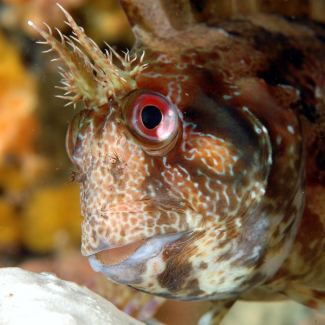
New viruses related to both giant viruses and herpesviruses
A team from the CEA and CNRS have discovered the existence of mirusviruses: a major group of viruses abundant on the surface of the seas and oceans, where they infect single-celled plankton. These findings appear in Nature on 19 April. The discovery provides a better understanding of the scope of ocean biodiversity and the importance of viruses in these ecosystems. Above all, these viruses have an amazing evolutionary history similar to that of the herpes virus, which infects half of the world's human population, and of giant viruses, a completely distinct virus group also abundant in oceans. They offer the scientific community new opportunities to study — in oceans and beyond — the ecology and evolution of DNA viruses. Research was conducted at Genoscope using data collected during the Tara Oceans expedition (2009-2013), a joint endeavour between the Tara Oceans Foundation and in particular teams from CNRS, EMBL and the CEA in the framework of the Tara Oceans consortium.
Metagenomic data from Tara Oceans on marine plankton has enabled the discovery of a major group of DNA viruses found abundantly from the equator to the poles: mirusviruses. These viruses play a role in regulating plankton by infecting a considerable number of single-cell organisms at any given time. They are highly complex with a surprising genomic composition: the genes key to forming their viral particle, a characteristic of these DNA viruses, have a direct evolutionary link with herpes viruses. The latter are common in animals (half of the world's human population is infected with the herpes virus) but non-existent in other life forms, leaving the question of their evolutionary origin unanswered.
The discovery of mirusviruses suggests that the ancestors of herpes viruses once infected marine single-cell organisms. The evolutionary history of mirusviruses held other surprises. Despite the obvious link to herpes viruses, the majority of mirusvirus genes, including those involved in viral genome replication, are similar to those of giant viruses, a completely distinct virus group that intrigues scientists for their amazing properties. This evolutionary ‘chimaerism’ in mirusviruses is unique and could provide information about the evolution of DNA viruses.
“In 2019, our research team observed an unusual evolutionary signal in the massive amounts of sequencing data provided by the Tara Oceans project. By tracking this signal, we discovered and then characterized a major DNA virus group: mirusviruses. The publication of this discovery in Nature marks the start of a new adventure and a gateway for the scientific community to detect and study mirusviruses in any number of ecosystems,” explains Tom Delmont, an expert in microbial ecology at CNRS and last author of the study.
“Tara Oceans has transformed our understanding of plankton ecology. Our study proves that this incredible expedition also provides answers to fundamental evolutionary questions. Much remains to be discovered and understood about mirusviruses. They have yet to be cultivated, no images of their viral particle exist, and we have yet to study them in places other than the oceans!” said Morgan Gaïa, a virus evolution expert at the CEA and first author.
More about the Tara Oceans Expedition (2009 - 2013)
For nearly four years, the schooner Tara sailed every oceanic basin on a unique mission: to obtain a global picture of marine plankton ecosystems around the world. This overlooked and invisible biodiversity is a crucial marker of the health of our planet and its climate system. Nearly 35,000 samples of viruses, bacteria, algae and plankton have been collected and analysed and are still being analysed. The largest genetic sequencing effort ever carried out on a marine ecosystem, the expedition has highlighted a majority of previously unknown microbial genes. Led in collaboration with the Tara Ocean Foundation, this expedition mainly involved teams from CNRS, CEA and EMBL, which are members of the Tara Oceans consortium and the GO-SEE (Global Oceans Systems Ecology & Evolution) research network.

© Christian SARDET / Tara Océans / Plankton Chronicles / CNRS Images

Mirusviruses link herpesviruses to giant viruses. Gaïa M, Meng L, Pelletier E, Forterre P, Vanni C, Fernandez-Guerra A, Jaillon O, Wincker P, Ogata H, Krupovic M et Delmont TO. Nature, April 19, 2023.
DOI: 10.1038/s41586-023-05962-4.


